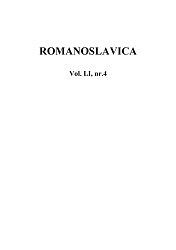О суфиксу -ина у формацијама типа Церетина (топонимија Свинице, Румунија)
On the suffix -ina in formations of the Ceretina type (toponymy Svinice, Romania)
Author(s): Jovanka RadićSubject(s): Lexis, Semantics, Sociolinguistics, South Slavic Languages, Philology
Published by: Editura Universităţii din Bucureşti
Keywords: Serbian dialects; village of Svinica (Svinița) in Romania; toponymy; word formation; suffix - ina; formant -ov- / -ev-; formant -et-;
Summary/Abstract: The study deals with toponyms containing the suffix -ina and a phytonym as its base. Three types of such formations – Cerovina, Ceretina and Cerina – have been evidenced in the toponymy of Serbian settlements in the territory of Romania. The formation type 'a phytonymic base' + the formant -et- + the suffix-ina (Cer-et-ina), widely evidenced in the speech (toponymy and the appellative lexicon) of the village of Svinica (Svinița; the Danube Gorge, a dozen kilometres downstream from Lepenski Vir), is unknown in other Serbian dialects, as well as in other Slavic languages. Along with the toponym Caretina (←*Cer-et-ina), which is also evidenced in the Danube Gorge (the village of Mačević, upstream from Lepenski Vir), this type of structure can only be found in the toponym Rastetina (←*/h/rast-etina) in middle Polimlje. The paper seeks to reveal the semantic composition of these toponomastic structures and their formal counterparts in the appellative lexicon (names of substances of vegetal and animal origin hrast-ov-ina /wood/ : ‘hrast’ [oak]; zečetina /meat/ : ‘zec’ [rabbit]). In order to explain the semantic composition of lexical units, it is necessary to reveal the basic values of the bound morphemes that are integrated into them, taking into account the various systemic functions performed by them (e.g. “ov” / “ev” as a plural case formant, an adjective suffix with different values, a forming formant). It is observed that in toponyms of the Cerovina type the formant -ov- / -ev- serves as an indicator that the motive word is used in the referential value (*cerovina ‘/well-developed/ trees of quercus cerris cover an area of indeterminate extent’), whereas the formant -et- was used to indicate non-referential (general, determinative) values of the motive word (*ceretina or *cerina ‘wood /a forest stand/ in which a particular tree species prevails /in this case quercus cerris/ covers an area of indeterminate extent’). Similar research methods reveal the values of the suffix -ina.
Journal: Romanoslavica
- Issue Year: LI/2015
- Issue No: 4
- Page Range: 175-192
- Page Count: 18
- Language: Serbian

